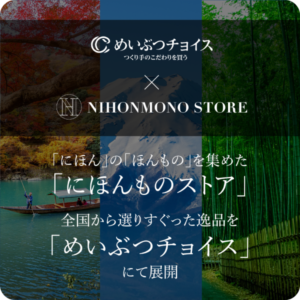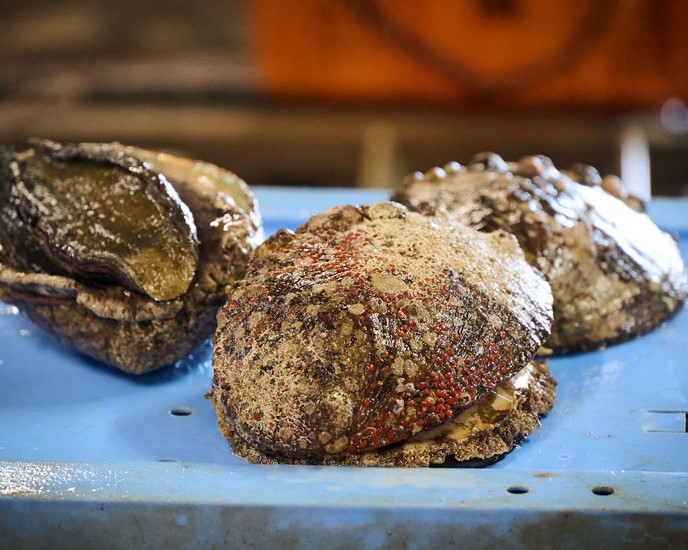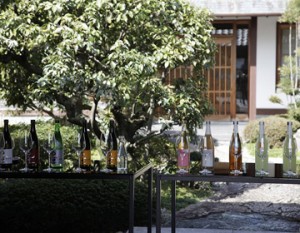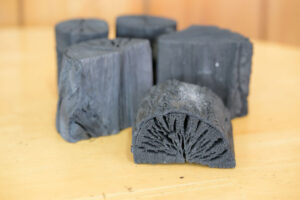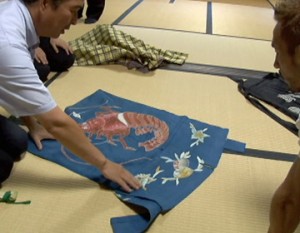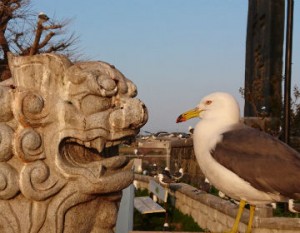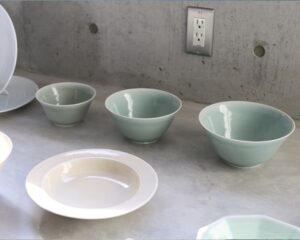Chiba Prefecture is close to the Tokyo metropolitan area, but is surrounded by the sea on three sides. Due to the influence of the Kuroshio Current and the Oyashio Current that flow offshore, fishing has been thriving since ancient times, and a wide variety of seafood is landed. In particular, the Chikura region in Minami Boso boasts one of the highest abalone catches in the country. Through the efforts of the Higashi Awa Fisheries Cooperative Association, we learned about efforts to improve the quality and value of black abalone and resource management.
Japan’s best Boso black abalone, in season in summer

The coast of Minami Boso is dotted with numerous rocky areas known as isone, where many seaweeds such as Kajime and Erame grow, which are eaten by abalone and turban shells, making it one of the largest production areas in Japan.
The black abalone of the Boso region is a historic specialty, and its name is even recorded on wooden tablets from the Nara period. At the time, there was no technology to transport it live, so abalone was dried and wrapped in strips of paper, which is said to be the origin of the modern-day noshi bag (wrapping paper).
In March 2011, four fisheries from two local cities merged to form the Higashi Awa Fisheries Cooperative. Taking advantage of its proximity to the Tokyo metropolitan area, the region offers fresh fish and processed seafood products. Black abalone with a shell length of 12 cm or more caught here have been certified as Chiba Prefecture’s branded seafood products. The black abalone caught here is highly regarded in the market as the highest quality product, with a dense meat content, a rich flavor, and a sea scent that spreads from the moment you put it in your mouth. Chiba Prefecture’s abalone catch by fish species in 2022 was 60 tons, ranking fourth in the country. In particular, the catch in the jurisdiction of the Higashi Awa Fisheries Cooperative Association accounts for more than half of the total catch in Chiba Prefecture.
In addition to black abalone, red abalone, turban shells, and spiny lobsters are also caught here, and the reason it is one of the best fishing grounds in the country is that there is no “isoyake,” a condition in which seaweed beds are significantly weakened or disappear.
The causes of isoyake vary depending on the region and environment, but in recent years, the rise in seawater temperature due to global warming has been pointed out as the rapid progression of isoyake. Sea urchins and vegetative fish become more active as the seawater temperature rises. This causes damage to the seaweed beds to the point that they cannot recover.
In the “Policy for the Preservation and Recovery of Seaweed Beds (Outer Boso Sea Area)” announced by Chiba Prefecture, it was found that there was no long-term disappearance of seaweed in this area and it was distributed throughout almost the entire sea area, whereas a decrease in the area of seaweed beds was reported in the neighboring Inner Boso Sea area. This situation is also seen in fishing grounds throughout Japan. Although an accurate comparison cannot be made because the survey methods are different, the national and local governments conducted on-site inspections and analysis of satellite images and found that the area of seaweed beds nationwide was 201,212 hectares in surveys conducted from 1989 to 1992, but has been decreasing to 164,340 hectares from 2018 to 2020. If the scale of the decrease was expressed in terms of cities and towns in Chiba Prefecture, it would be the size of Ichihara City, which has a total area of about 368 square kilometers. Since seaweed beds of this size have disappeared in about 30 years, it is necessary to monitor and be vigilant in the future, as well as take measures to deal with this.
Fishing season in Chikura area
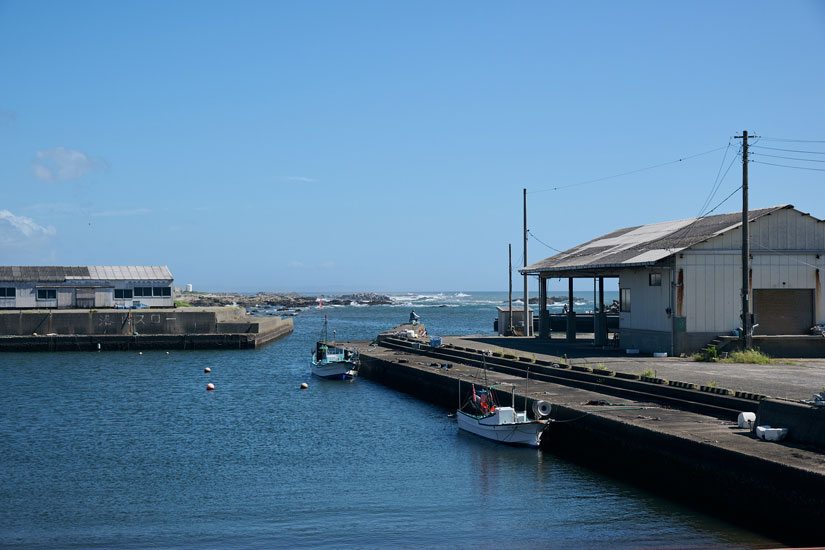
The abalone fishing season in Chiba Prefecture runs from April 1st to September 15th, but the fishing season in the Chikura area runs from May 1st to September 5th, a month shorter than the regular season. This is all to prevent overfishing. The abalone are mainly caught by diving fishermen, in shallow waters about 5 meters deep. Fishing by long dives using wetsuits is prohibited, and the fishing grounds are protected by sharing the limited resources with the fishermen’s own hands.
There is also a distinction between men and women in the abalone fishing industry, with the kanji for men being ama and women being ama. Most of the diving fishermen in this area are ama. When the ama fishing organization was established in 1971, there were 240 registered men and women, but due to the aging of the ama, the harsh working conditions, and the lack of young people to take on the role of ama, there are now only 35 ama.
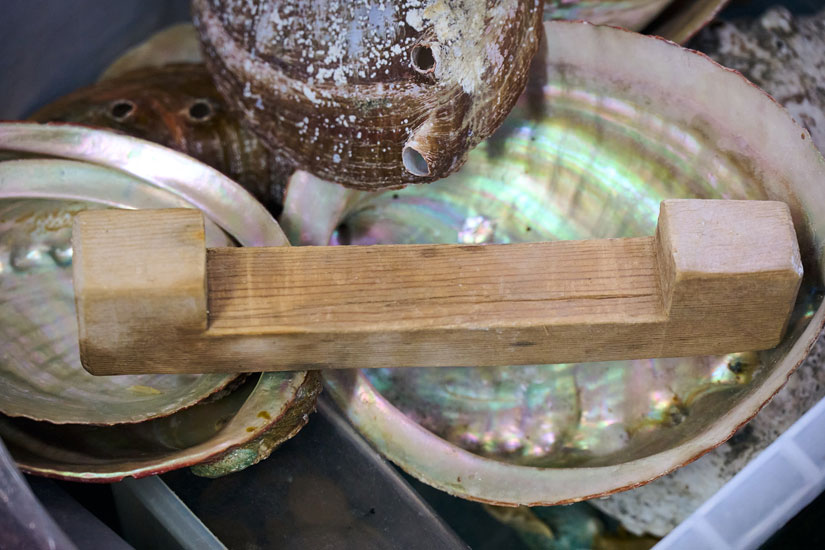
Diving fishing requires not only fishing techniques but also the help of nature. The number of days of operation is limited, depending on the speed of the tides, the coldness of the bottom current, and the turbidity of the water. Furthermore, fully grown black abalone often find themselves alone in limited areas of reefs, making them a precious treasure of the sea that is difficult to catch in large numbers.
However, in the 1970s, overfishing of madaka abalone, which live at depths of about 20 meters, was carried out using helmet diving, which allows for long dives, leading to overfishing, and in the last three years, there has been no catch in this area. The abalone has become a phantom.
Based on these bitter experiences, there is a strong desire to protect the Ama fishing grounds, and activities to increase the resource have been undertaken early on, with the belief that “resource management is what will support the future of the fishing industry.”
Suzuki Hitoshi, councilor of the Higashi Awa Fisheries Cooperative, said, “Technological advances may make operations easier, but each fisherman has become more aware of the need to not let the resources be depleted, and I think that is what determined the current form of fishing.”
For that reason, the Higashi Awa Fisheries Cooperative uses a fishing tool called a shakubo to measure abalone in the sea to determine their size, and they strictly enforce the rule that any abalone with a shell length of 12 centimeters or less, regardless of species, must be released back into the sea.
Livestock farming to stabilize fish prices
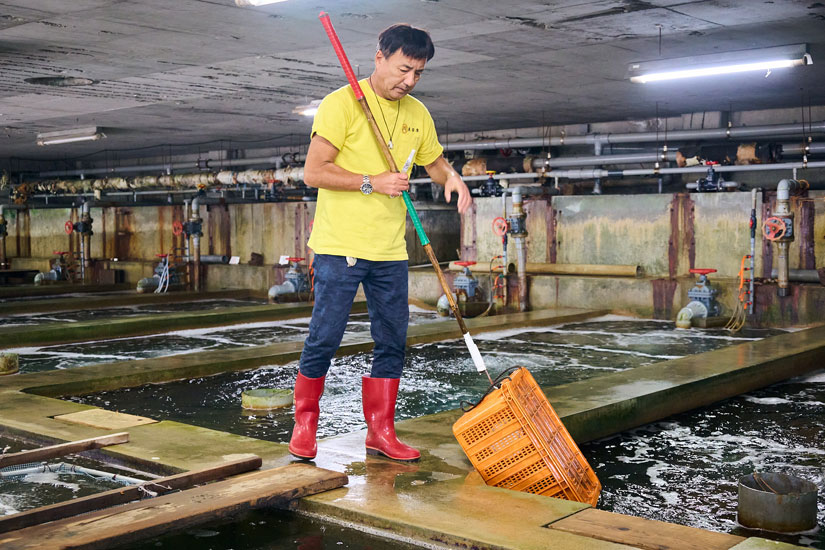
The fish farm is about a three-minute drive from the Higashi Awa Fisheries Cooperative Association headquarters. The farming, which is said to have started here in the 1960s, is made up of a number of concrete tanks, where seawater is pumped up, cooled, oxygenated, and circulated.
The farm’s role is to provide intermediate care for abalone juveniles, temporarily stock fish caught during fishing, and rehabilitate fish injured during fishing. It also stocks and raises abalone, turban shells, and spiny lobsters caught along the coast in small cages. The farm has established a system for stable shipments even during periods of rough weather, aiming to “stabilize fish prices.”
The fish farm also wholesales directly to retailers, hotels, and inns through the fishery cooperative, and has expanded its reach through online sales, helping to protect the livelihoods of fishermen.
Import-based fisheries
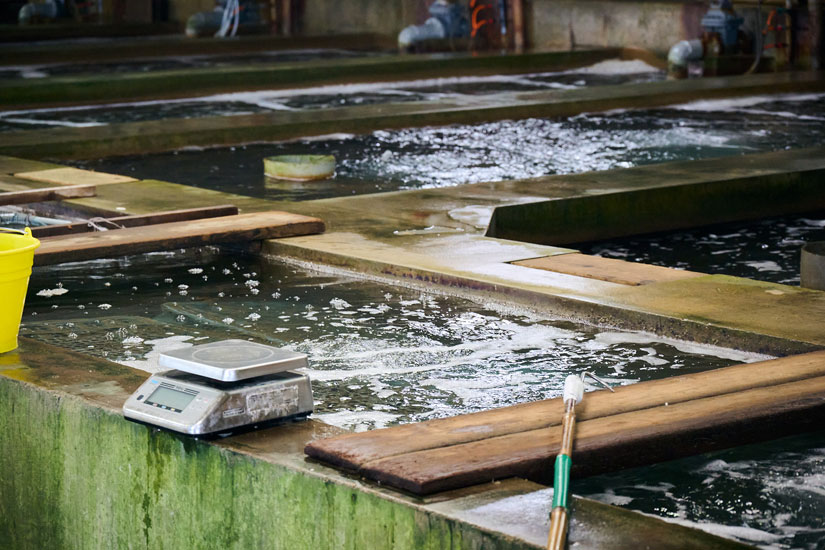
Chiba Prefecture is promoting a “three-year ring harvesting method” of slowly growing abalone, releasing young black abalone to stabilize the catch and preserve the abalone fishery for the future.
This “three-year ring harvesting method” was investigated and researched in the 1970s by Chiba Prefecture, fishermen, and the Chikura Town Southern Fisheries Cooperative Association, the predecessor of the Higashi Awa Fisheries Cooperative Association, and is a method that has been worked on through trial and error to stabilize the catch by releasing young black abalone and preserve the abalone fishery for the future.
This ring harvesting method divides the fishing grounds into three areas, releasing young abalone into area A in the first year, area B in the second year, and area C in the third year, and then harvesting and releasing them after a three-year growth period, ensuring a certain catch.
At that time, after numerous discussions with the fishermen led by Councilor Yasushige Ueki, who was also a Fisheries Cooperative Association employee, and receiving their consent, they then embarked on surveys and trial fishing grounds. Local abalone who knew the ecology of abalone cooperated, such as “where to release abalone so they are not attacked by predators.” After numerous trials to determine the shape and weight to prevent them from being washed away by the tide, they arrived at a concrete block (80cm x 60cm) called a slab.
The Chikura Town Southern Fisheries Cooperative Association then produced an original slab with 5cm legs to make it easier for the abalone to live in, and installed over 1,200 of them in one fishing ground. As many large black abalone were landed, the morale of the abalone rose, with people saying “this is a worthwhile endeavor,” and the discovery that a ring harvesting method was also possible was a major achievement for those involved in the fishing industry.
“I’ve heard that it was quite hard work to get to where it is today,” Suzuki said, recalling the pioneers. “You raise the young oysters for a year, then release them into the sea and create a habitat for the surviving black abalone to spawn. Naturally, this increases the number of wild abalone and the recovery rate.”
It is said that black abalone raised in the sea for three years using the rotation harvesting method taste just as good as wild abalone. This is helping to promote the fishing industry of cultivating and cultivating black abalone. Other areas of the outer Boso Peninsula have also adopted this method, and it is drawing attention from areas around the country where coastal fishing is thriving.
The fact that maintaining this catch has brought a stable income to the abalone fishermen was recognized, and in 2016, they received the Prime Minister’s Award in the Fisheries Promotion category at the 9th Maritime Nation Promotion Merit Awards.
Introduction of the four-ring harvesting method
In recent years, the Higashi Awa Fisheries Cooperative Association has been working on a four-year ring harvesting method, extending the ring harvesting period by one year, in order to raise larger abalone and increase their added value.
Chiba Prefecture also supports this. It supports the shift to the four-year ring harvesting method, which is expected to increase natural resources by increasing revenue from catching large abalone with a high unit price and increasing spawning opportunities, and also provides technical support such as understanding the fishing ground environment, proper placement of flat plates, and efficient pest control, which are necessary to increase the productivity of ring harvesting fishing grounds.
The advantage is that the size is larger than the conventional three-year ring harvesting method. By increasing the one-year fishing ban, the proportion of abalone with shell length of less than 12 cm, which is the limit, will decrease significantly, and released black abalone will spawn at least once, which will lead to an increase in resources. And since the flat plates do not rise frequently, the stress of the abalone is reduced and they can remain in the fishing grounds.
Taking over from the pioneers, it can be said that the shift from catching to cultivating fishing has achieved a certain level of success.
Communicating the appeal of local industries
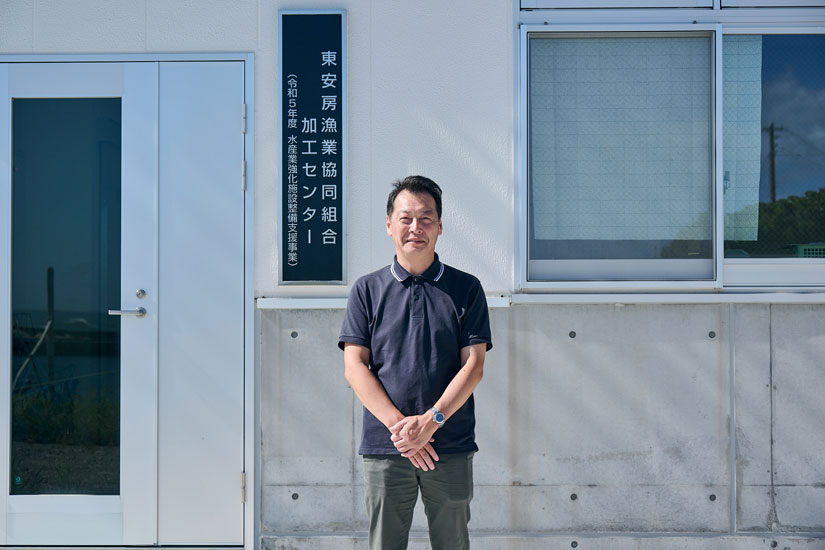
On the other hand, the decline in fishermen and the aging of the population are also pressing issues. The youngest fishermen in this region are in their 40s, and the oldest are in their 70s. Although it is a profession that allows fishermen to go out to sea for their entire lives, in order to catch abalone, which is a designated marine product, it is necessary to join a fishing association because fishing rights are set. There is no exam, but those who live in the area, are familiar with the sea, and have an awareness of resource management are recognized.
In the face of a shortage of people to take on the role, “We are recruiting fishermen for the Regional Revitalization Cooperation Team. We are working to help them become independent during the three-year term,” said Councilor Suzuki, and continued, “I hear that more and more people are interested.”
The Higashi Awa Fisheries Cooperative Association also aims to convey the appeal of the local industry by providing its farm as a place for local elementary school students to learn about the industry from the perspective of the future, and by carrying out awareness-raising activities.
The future of Boshu black abalone
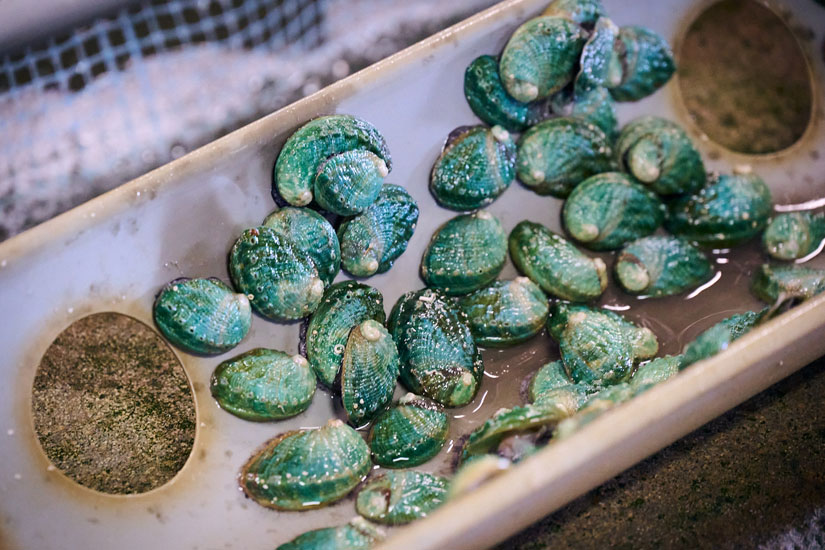
The Higashi Awa Fisheries Cooperative Association supports the fisheries by setting up fish ponds and buying seafood from the fishermen. This is a rare case in the country. On the other hand, if they are poor at sales, the business will not be viable, so they need to take a step further and challenge themselves by taking distribution in the domestic market.
To achieve this, it is important to let many people know about the appeal of Boshu black abalone while strengthening the brand power.
Black abalone live on the rocks, so their numbers are limited and it takes time for them to grow. Our ancestors have learned how to deal with the long relationship between people, the sea, and black abalone using various wisdom. They will pass on the idea of ”being grateful to the blessings that nature has given us while we have made efforts” to the next generation. An employee of the Higashi Awa Fisheries Cooperative Association says that their current and future goal is “to increase the profits of Boshu black abalone fishermen, to encourage young people to take an interest in the local industry, and to lead to a sense of attachment and revitalization of the local area.”
Councillor Suzuki looked ahead and said, “While managing the resources, I want to preserve what has been a brand since the Nara period, maintain the number of fishermen and the amount of catch, and preserve the traditions of this region as an industry that people can make a living from.”
There will no doubt be challenges in the future, such as environmental change and the issue of who will carry on the work. However, there are many people who have worked hard to create fishing grounds and use the rotation harvesting method to preserve abalone fishing for the future. The light of abalone fishing and Ama culture will never be extinguished.
Please take this opportunity to try Boshu black abalone, which boasts the highest quality in Japan.
